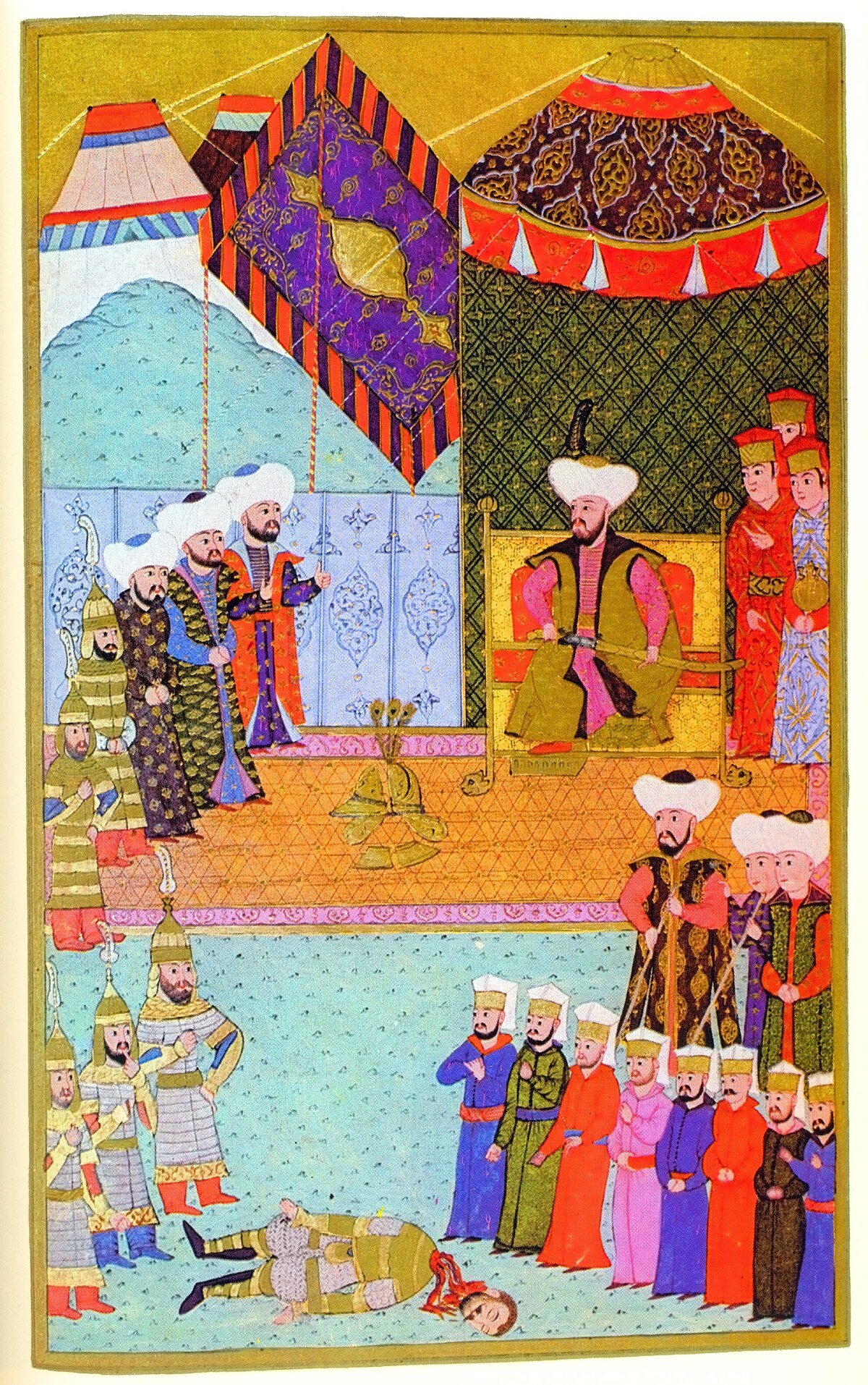
Growth
Edirne, TürkiyeMurad's reign was troubled by insurrection early on. The Byzantine Emperor, Manuel II, released the 'pretender' Mustafa Çelebi from confinement and acknowledged him as the legitimate heir to the throne of Bayezid I (1389–1402). The pretender was landed by the Byzantine galleys in the European dominion of the sultan and for a time made rapid progress. Many Ottoman soldiers joined him, and he defeated and killed the veteran general Bayazid Pasha, whom Murad had sent to fight him. Mustafa defeated Murad's army and declared himself Sultan of Adrianople (modern Edirne). He then crossed the Dardanelles to Asia with a large army but Murad out-manoeuvered Mustafa. Mustafa's force passed over in large numbers to Murad II. Mustafa took refuge in the city of Gallipoli, but the sultan, who was greatly aided by a Genoese commander named Adorno, besieged him there and stormed the place. Mustafa was taken and put to death by the sultan, who then turned his arms against the Roman emperor and declared his resolution to punish the Palaiologos for their unprovoked enmity by the capture of Constantinople.
Murad II then formed a new army called Azeb in 1421 and marched through the Byzantine Empire and laid siege to Constantinople. While Murad was besieging the city, the Byzantines, in league with some independent Turkish Anatolian states, sent the sultan's younger brother Küçük Mustafa (who was only 13 years old) to rebel against the sultan and besiege Bursa. Murad had to abandon the siege of Constantinople in order to deal with his rebellious brother. He caught Prince Mustafa and executed him. The Anatolian states that had been constantly plotting against him — Aydinids, Germiyanids, Menteshe and Teke — were annexed and henceforth became part of the Ottoman Sultanate.
Murad II then declared war against the Republic of Venice, the Karamanid Emirate, Serbia and Hungary. The Karamanids were defeated in 1428 and Venice withdrew in 1432 following the defeat at the second Siege of Thessalonica in 1430. In the 1430s Murad captured vast territories in the Balkans and succeeded in annexing Serbia in 1439. In 1441 the Holy Roman Empire and Poland joined the Serbian-Hungarian coalition. Murad II won the Battle of Varna in 1444 against John Hunyadi.
Murad II relinquished his throne in 1444 to his son Mehmed II, but a Janissary revolt[4] in the Empire forced him to return. In 1448 he defeated the Christian coalition at the Second Battle of Kosovo.[5] When the Balkan front was secured, Murad II turned east to defeat Timur's son, Shah Rokh, and the emirates of Karamanid and Çorum-Amasya. In 1450 Murad II led his army into Albania and unsuccessfully besieged the Castle of Kruje in an effort to defeat the resistance led by Skanderbeg. In the winter of 1450–1451, Murad II fell ill, and died in Edirne. He was succeeded by his son Mehmed II (1451–1481).
